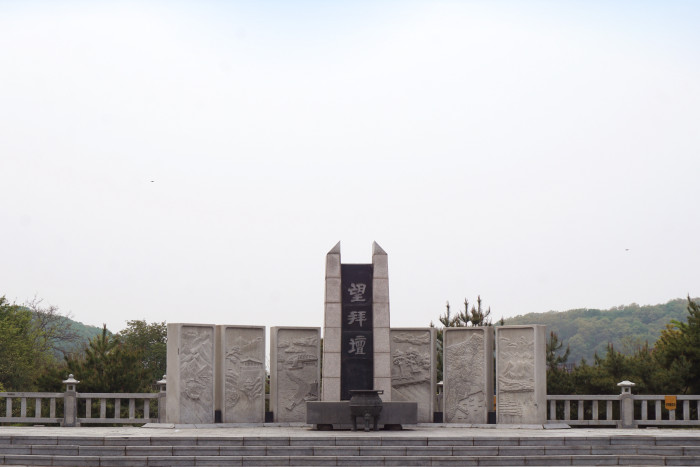GGC
Paju_Imjingak Tourist Site
Praying for peace in a place engraved with pain of Korean War

Maybe it is the effect of the inter-Korean summit and the Panmunjom Declaration. The atmosphere of Imjingak Tourist Site was more upbeat than usual. It seems as if excitement of the historic moment witnessed on a TV has been delivered here as well. The faces of families on picnic and tourists who have visited Korea at an opportune timing were colored like spring with the spirit of peace that has come to the Korean Peninsula.
The Imjingak Tourist Site is one of the country’s most notable tourist attractions that has been developed immediately after the 1972 North-South Korea Joint Statement. Centered on Imjingak, which has one underground and three above-ground floors, the space features Pyeonghwa Nuri Park, the Bridge of Freedom, Mangbaedan, etc., remembering the agony of division and longing for unification of the peninsula. Constructed to pacify the sadness of displaced people, Imjingak has a souvenir shop, convenience store, restaurant, café, and observatory. Once you walk up to the Haneul Maru Observatory, Haemaru Village, which is a town that restricts civilians’ access, as well as DMZ and Imjingang River Railroad Bridge can be seen below.
Near Imjingak, the Bell of Peace, where a bell-tolling event is held in celebration of every New Year’s Day; Mangbaedan at which displaced people whose hometowns are in the North cherish their ancestors; Unification Pond and the Bridge of Freedom that crosses it are located. In 1953, 12,773 prisoners of the Korean War crossed this bridge and reached the South in pursuit of freedom. Next to it, there is a steam locomotive at Jangdan Station on Gyeongui Line that has been designated as the registered cultural heritage of Korea No. 78, which is the symbol of North-South division and has been left as neglected in DMZ for nearly half a century since it was bombed and derailed during the Korean War. After it was registered as cultural heritage to be preserved as an evidence of history in 2004, stains of rust have been removed and the train is exhibited at the current location. 1,020 bullet marks left on the train and deformed wheels tell us the horrendous situation of the time.
Pyeonghwa Nuri Park on a 30,000-pyeong green grass hill is a famous photo spot. There are many who record memories through photos in front of the hill that touches the sky and colorful pinwheels. In addition, a large-scale outdoor performing stage, which can accommodate 25,000 people, a café on the water and the Windy Hill host a variety of cultural arts events throughout the year.
Written and photos by Park Hee-eun
Website tour.paju.go.kr
<Copyright(c)2002 GGC All rights reserved.>
information
Imjingak Tourist Site
Address/ 148-53, Imjingak-ro Munsan-eup, Paju-si, Gyeonggi-do
Contact/ 031-953-4744
Website/ tour.paju.go.kr
- Writer
- About
You might like
Location around
Paju_Imjingak Tourist Site
Praying for peace in a place engraved with pain of Korean War
Paju_Dorasan Station
Train runs with the dream of unification
Paju_The 3rd Tunnel
Another Demarcation Line underground
Korean Independence Activists of Gyeonggi-do
Korea under the Japanese Colonial Rule and the Korean Independence Movement